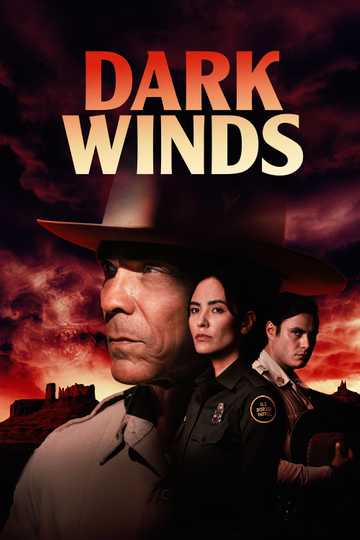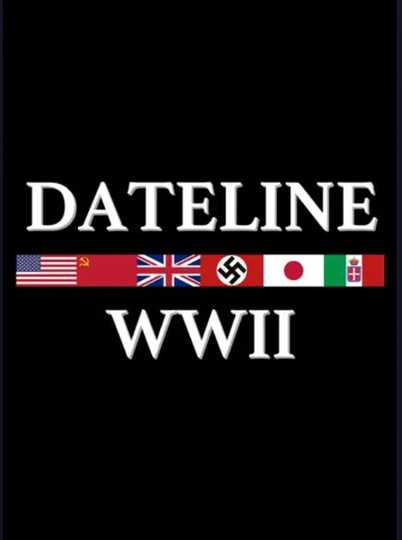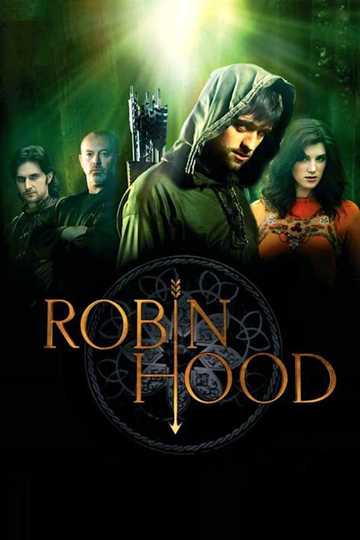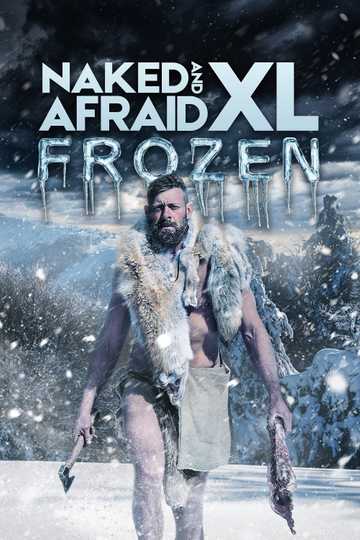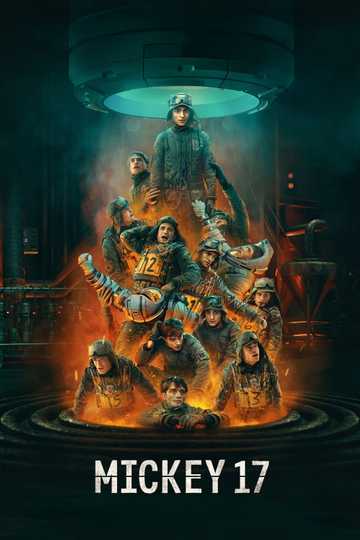Season 1 Episodes
1. The Path to War
This first episode covers Hitler's New Germany after his rise to power as Chancellor in 1933 and his rearmament of the German military and his rise to dictator. Britain's Prime Minister Chamberlain's attempt to stave off war in Europe through diplomatic means through the 1930's. It also includes Japan's invasion of China in 1937 and the Hitler & Stalin non-aggression pact that allowed Hitler to initially wage a one front war in Europe.
2. Victory at El Alamein
Hitler unleashes blitzkrieg with paratroops, massive air armadas and fast moving armored and mechanized divisions in Western Europe through the Netherlands, Belgium and Luxemburg and invades France. The British Expeditionary Force is pushed to the sea at Dunkirk while the Germany army sweeps through France in six weeks.
3. The Desert to the Steppes
Tensions rise in the Pacific between the Japanese and the United States and with Britain and France who have holdings throughout East Asia. In North Africa British forces duel in the desert against Erwin Rommel, the Desert Fox, and his Afrika Corps who have come to take over the North African campaign from Mussolini's stalled forces. Hitler unleashes a blitzkrieg in Eastern Europe opening up a two front war in Europe.
4. The Sleeping Giant Awakens
Japan draws the United States into the war with attack on Pearl Harbor. Philippines, Guam, Wake Island and the British Crown Colony of Hong Kong also attacked and Japanese forces invade Thailand and Malaysia. In Eastern Europe, the Russians launch a massive counter-attack against the Germans.
5. The World at War
Rommel's forces retreat in North Africa. German Army puts Leningrad under siege that would last until early 1944. The British Colonies in Asia fall to the Japanese. A look at the U.S. fighter planes in service at the outbreak of war. With the United States now engaged a look at the World at War.
6. Water & Sand
U.S. troops in the Philippines retreat to Bataan. On the home front, America gears up for global war. The Afrika Corps reverses retreat and catches the Allies unprepared in new fighting in North Africa. A look at the U.S. pilots fighting the air war in China.
7. An Empire Shaken
Singapore, the major British military base in Southeast Asia and the keystone defense position for the region and the Southwest Pacific falls to the Japanese. It is the largest surrender of British military personnel in history. The Nazis prepare their Final Solution for the Jews in Europe.
8. "I Shall Return"
9. New Pacific War Strategy
Japanese capture British stronghold Mandalay in Burma and begin occupation that lasts until March 1945. In the Pacific, the Allies split the command into two main areas of operation: The Central Pacific under command of Admiral Chester Nimitz and the Southwest Pacific area commanded by General Douglas MacArthur. The military-industrial complex builds and the Propaganda Wars escalate.
10. US Bombs Tokyo
U.S. Bombers trike Tokyo in April 1942. President Roosevelt, when asked, where did the bombers come from, famously said from our secret base 'Shangri La'. In the Philippines the Japanese finish the conquest with the fall of Bataan and Corregidor. Great Britain and Russia forge an alliance in their fight against Germany. Tensions mount in North Africa with both sides preparing for major actions.
11. Prelude to Midway
The Battle of the Coral Sea in the Pacific in May 1942 was the first major action with aircraft carriers engaging each other. The battle was a strategic victory for the Allies forestalling the Japanese invasion of New Guinea. The Japanese invade the Aleutian Islands as part of their complex plan for the invasion of Midway Island. Profiling Nazi leaders Goebbels, Goering and Himmler.
12. Pacific War Turning Point
The Battle of Midway in June 1942 was a crucial and decisive naval battle and was the turning point in the Pacific war. It was a massive victory for the U.S. The Japanese losses were devastating and they would not be able to mount a major offensive carrier attack for the balance of the war. Military historian John Keegan called it "the most stunning and decisive blow in the history of naval warfare."FDR and Churchill meet in Casablanca to discuss overall war strategy. In North Africa Rommel takes the key city of Tobruk. Admiral Nimitz profiled.
13. The Tide Turns in the Desert
Churchill visits North Africa and Moscow. The Luftwaffe pounds the British on Malta, and Rommel is defeated at El Alamein.
14. Marines Invade Guadalcanal
After victories at Coral Sea and Midway the Allies take to the offense in the Pacific with U.S. Marines landing on Guadalcanal in August 1942. With the eventual victory at Guadalcanal, the strategic initiative passed to the Allies for the remainder of the Pacific war. In Europe the Russians stop the Germans at Stalingrad and turn the tide of war.
15. Battle of the Atlantic
Battle of Bloody Ridge on Guadalcanal. Rommel returns to Germany from North Africa. Allies battle German U-Boat Wolfpacks attacking convoys in the Atlantic. Allied send material aid to Russians. Preparations continue for Operation Torch, the North Africa invasion.
16. Victory at El Alamein
Marines halt Japanese Guadalcanal offensive to retake Henderson Field. Major victory in North Africa as British 8th Army scores huge victory over Afrika Corps in Battle of El Alamein. Allies invade Morocco and Algeria forcing a two front war on the Africa Korps. Profile: Medicine Men - Doctors In The Jungle.
17. Allies Hold Firm
U.S. Navy turns the tide off Guadalcanal ending stalemate. The Vichy French government surrenders to the Allies in North Africa. Germans trapped in Stalingrad by Red Army. The U.S. becomes the arsenal of democracy.
18. Pacific Miracle
Allies fight to hold New Guinea against Japanese forces. Red Army tightens the trap of German forces in Stalingrad. The miracle of Pearl Harbor: Battleships shattered in December 1941 attack salvaged, refloated, repaired and many re-enter active service. Liberty Ships - cargo ships - production goes into high gear in the U.S.
19. Guadalcanal Secured
First Marine Division relieved by Army forces on Guadalcanal after months of brutal fighting. In North Africa, Admiral Darlan, Commander-in-Chief of the French armed forces and High Commissioner in North Africa as part of the German controlled Vichy regime in France is assassinated. British and U.S. Air Forces begin concentrated bombing of German submarine pens. On the home front, U.S. recycles rubber at home to support war effort.
20. Breaking the Siege
The German grip in Russia broken at Stalingrad and Leningrad. In North Africa British forces take Tripoli. Japan's Hollow Army: After Midway with the Allies naval forces on the offensive, Japan's troops in the South Pacific began to feel the effects of dwindling supplies. New technology: Radar scans the horizon.
21. Two Fronts, Two Results
Final victory at Guadalcanal in February 1943 transitions Allies in the Pacific from defense to a posture of strategic offense. In Burma, a key to Japan's drive toward India, Britain's Indian Brigade begins guerilla operations against Japanese forces. American forces defeated by Germans in first encounter at Kasserine Pass in North Africa. German Army counterattacks after Stalingrad loss retaking Kharkov and Belgorod in the Ukraine and destroy 50 Soviet divisions halting Red Army advance. Profile: Low maintenance machines important to victory.
22. Patton Arrives in North Africa
Allies inflict major defeat on Japanese trying to reinforce New Guinea at battle of Bismarck Sea. British bombing campaign against Germany targets Nazi industrial base. In North Africa, Patton takes over American forces. Russian Air Force getting upper hand against Luftwaffe. American troops train for jungle warfare.
23. Patton Pounds Nazis
U.S. forces under Patton defeat German tank units at battle of El Guettar in Tunisia. In the Pacific Admiral Yamamoto, commander of the Combined Fleet of the Imperial Japanese Navy, was killed in an air attack that shot down his plane in a planned attack. The effect on Japanese morale was considered the equivalent of a major defeat in battle. RAF continues heavy bombing of German industry. The Luftwaffe fights to retake the skies. A look at aircraft Nose Art.
24. Operation Mincecoats
The Battle of Hill 609 in Tunisia is a key victory for American forces. British fool Germans with Operation Mincemeat convincing German High Command Allies next target is Greece, not Sicily. In the Atlantic, Allies push U-Boats to the brink with Nazi subs retreating from the North Atlantic. A look at life aboard an aircraft carrier.
25. Surrender in North Africa
The Battle of Attu in the Aleutians in May 1943 was the only land battle in World War II fought on incorporated territory of the United States. Attu and Kiska had been occupied by the Japanese as part of the complex Midway campaign undertaken by the Japanese Navy and Army. It is also the only land battle in which Japanese and American forces fought in Arctic conditions.
26. Operation Husky
U.S. plans for Pacific Campaign in 1943 centers on Central Pacific Theater. German armored forces on the Eastern Front move towards Kursk in Russia leading to climactic tank battle. In Europe, the Allies invade Sicily. A look at the Engineers in the European Theater.
27. Patton Takes Palermo
Patton takes Palermo in Sicily in route to Messina. American forces capture Munda and key airfield n New Georgia island group in the Solomons. Allies bomb Ploesti oil fields in Romania, a key oil producing complex for the Axis armies. On the Easter Front the Red Army gets relief.
28. A Rivalry Rages
General George Patton and his 7th Army and British Field Marshal Montgomery and his 8th Army race to take Messina in Sicily and cut off German forces. Patton's forces, which also took Palermo, arrive first and establish a new model for mobile warfare . A new tactic: Island hopping as Island 'Leapfrog' campaign begins in the Pacific. On the Eastern front in Europe, Russian Army rolling.
29. Major Shift
Allies attack German rocket bases to stop Nazi 'vengeance' rocket weapon attacks on Britain. Allies inflict defeats on Japanese throughout the Pacific. Operation Avalanche: The Allies land at Salerno in Italy. Mussolini overthrown in Italy by King Emanuel and members of Mussolini's military and government. Italy capitulates in September 1943 to Allies. A look at the Samurai code in Japanese Officer Training.
30. Nazis Rescue Mussolini
Mussolini rescued by German paratroopers and restored to power in Northern Italy. In the Pacific U.S. Navy launches major drive toward Japanese homeland. Daylight air raids halted in Europe while nighttime raids continue. A look at life in Britain: Civilians share the sacrifice.
31. German Forces Squeezed
Allies take Naples. Italian government turns on Germany and lines up with Allies. Germans fortify northern Italy with more troops. On the Eastern front Russians retake Kiev in the Ukraine. A look at Terra Infirma: Mud on the Battlefield.
32. Halsey Captures Bougainville
Admiral Halsey takes Bougainville in the Solomon Islands isolating main Japanese base at Rabaul. Heavy German resistance stalls Allies Italian offensive across all fronts. Allied leaders Churchill and FDR meet in Cairo to discuss Normandy campaign.
33. Atoll Disaster
The Battle of Tarawa in the Gilbert Islands was the first American offensive in the critical central Pacific region. U.S. forces took the island but the casualties in the few days of fighting were similar to the losses in the six month Guadalcanal campaign. The battle is often referred to as 'Bloody Tarawa'. In Italy British General Montgomery's forces on the move. Eisenhower named to command Overlord, the Normandy invasion.
34. The Tide Turns
A faster and more lethal Mustang fighter, the P-51 D, provides better cover for Allied bombers in Europe in bombing raids against Germany. Allies invade New Britain in December 1943 in the Pacific bottling up Japanese stronghold at Rabaul. 1943: The Tide Turns: The Year in Review. In the East, the Leningrad Siege lifted after 872 days.
35. Allies Land in Anzio
The Battle of Monte Cassino in Italy finally ended after months of heavy fighting with an Allied breakthrough in May 1944. This, plus the Allied landings at Anzio enabled the Allies to make the push to Rome. In the Pacific, U.S. forces take Kwajalein and Eniwetok for a major victory in the Marshall Islands opening a beach in Japan's defensive perimeter opening the way to the Marianas with victories at Guam, Saipan and Tinian bringing the Japanese home islands in range of U.S. heavy bombers.
36. Americans Roll Across Pacific
Allied landings at Anzio in Italy initially successful but slow movement allows for major German counterattack stalling drive to Rome. Monte Cassino: The Aftermath: The ancient abbey established by St. Benedict was completely destroyed by bombing and artillery barrages during the fighting. American forces roll across the Pacific through the Marianas and into the Philippine Sea.
37. Not Long Now
Japanese move out of Burma and invade India in 1944. Allied resistance forces Japanese retreat and by July the invading divisions were all but destroyed. Russian forces retake Crimea in southern Ukraine in May 1944. MacArthur's forces take Hollandia on New Guinea and key airfields. Overlord preparations moving fast as Allies prepare for Normandy invasion.
38. Operation Overload
The Allies finally break stalemate in Italy and move towards Rome. Hitler makes changes to command structure in Western Europe with Rommel now a key commander. A look at 'The Court of Neptune' and other naval traditions and customs for sailors' first crossing of the Equator. Eisenhower's big decision: Go or No Go for operation Overlord has worldwide implications for the future of the war.
39. D-Day
D-Day Special: Paratroopers airborne assault to secure key roads and bridges begin the invasion of Europe. Allies assault the Germans' Atlantic Wall: The Battle for The Beaches: Allies land at Normandy. German forces throughout France react to Allied landings. The sun sets on the Longest Day with Allies holding the beachheads.
40. Rome Liberated
Allies moving in Europe: General Clark takes Rome and D-Day beachheads expanded as Allied troops moving inland. In the Pacific, U.S. forces invade and take Saipan in the Mariana Islands putting the Japanese Home Islands within reach of U.S. B-29 bombers making this an important strategic victory. Hitler unleashes the V-1 rocket attacks on London bringing a new dimension to the war in Europe.
41. Patton's Third Army
Patton's Third Army becomes operational and leads breakout from the Normandy hedge row fields turning American armor loose across France. In the Pacific the Battle of the Philippine Sea becomes knows as the Marianas Turkey Shoot as U.S. naval aviators shoot down over 600 Japanese aircraft virtually ending the Japanese capability to mount carrier borne air strikes for the balance of the war.
42. US Army in France
As Allies move from beachheads German high command changes as overall commander Field Marshall Gerd von Rundstedt replaced. U.S. 1st Army advances on St. Lo a critical objective of the Normandy invasion. All fighting ends on Saipan. With Rome taken the Italian campaign slows and Italy a forgotten war theater as Germans retreat north.
43. Assassination and Resignation
Allied forces take Pisa a key position in the last German Army defensive line in Italy. In France U.S. forces take St. Lo and British move on Caen, a critical road hub in the Normandy region. In the Pacific, U.S. forces land on Guam and Tinian in the Marianas. Japanese war leader Tojo resigns. A plot by German politicians and military leaders to assassinate Hitler on July 20, 1944 fails.
44. Patton-Montgomery Rivalry Reignites
Russians halt advance outside Warsaw and Germans crush resistance in Polish capital. The Patton-Montgomery rivalry, started in North Africa, renews on the Western front in Europe. British forces take Florence as Allies continue push in Northern Italy. Allied forces force breakout from St. Lo in Normandy.
45. Anvil and Dragoon
U.S. forces move in Brittany to take key ports needed to supply Allied forces in France. Allies make new landings in Southern France, Operation Anvil & Dragoon, and take key ports at Toulon and Marseille and control of railroad hubs. A look at Photo Recon and Mapping.
46. Paris Liberated!
Allied forces liberate Paris with German commander surrendering to French forces on August 25th 1944. The Russians open a new offensive against German forces in the Baltics. Allied leaders debate the approach to the next phases of the war. B-29s arrive at Saipan with reach to Japanese Home Islands and the Philippines and Marines land on Peleilu in the Palau Islands.
47. Airborne Attack
Operation Market Garden in September 1944 was the largest airborne force used to that time. While initially successful the operation stalled at Arnhem with significant loss of the paratroop forces. In the Pacific, Allies increase bombing campaign against the Philippines. In Europe, Allies besiege Metz and cross the Siegfried Line.
48. British and Russian Success
Peleliu falls to the Marines in the Pacific while British forces take key port of Antwerp in Belgium opening new supply lines for Allied forces in Europe. British Prime Minister Churchill visits Moscow to confer with Russian leadership. Russian forces sweep through the Balkans pushing German forces into retreat.
49. A Promise Kept
Allies in Europe push into Germany with capture of Aachen. MacArthur fulfills his promise and returns to the Philippines as Allies invade to retake islands in October 1944. The Battle of Leyte Gulf in the Philippines is the world's greatest sea battle. The battle is a decisive Allied victory that cripples the Japanese fleet that will never sail again as a major offensive force.
50. Patton Drives to German Border
Allies take the Dutch island of Walcheren taking out German forces in a position to block Allied forces getting to key port of Antwerp for resupply. Japan reinforces its land forces on Leyte. Patton drives to German border and 3rd Army crosses Moselle River near Metz. German battleship Tirpitz, sister ship to the Bismarck, sunk by RAF. FDR elected for an unpresented third term in November 1944.
51. Hell in the Phillippines
First Allied convoy reaches Antwerp shortening supply lines for Allied forces in Europe. Vicious land battle in the Philippines continues. A look at U.S. submarines in the war in the Pacific. Metz falls to the Allies but buys time for retreating German Army. Britain stands down the Home Guard in December 1944.
52. Hitler's Last Gamble
U.S. forces land at Mindoro as part of battle of Luzon in the Philippines. A look at the bombing campaign in Europe. Hitler's last gamble: Hitler throws last reserves into the Battle of the Bulge with a major offensive through the Ardennes in December 1944 catching the Allied forces completely by surprise. It became the largest and bloodiest battle fought by U.S. forces in World War II.
53. Drive for Manila
U.S. forces in Luzon drive towards Manila. Battle of the Bulge continues on the Western Front. U.S. forces secure Leyte. Russian forces begin drive to the Oder River after debacle in Poland that sees the destruction of Polish resistance by Germans.
54. Third Strike for the Third Reich
Allies contain Bulge breach ending German Army offense in the West and Allied forces go back on the offensive and drive toward Germany. Allies take Clark Field in Philippines. In Poland, Warsaw falls to Russians. An update on the Burma Theater in Southeast Asia.
55. They Also Serve
St. Vith falls to Allies ending all German offensive operations in the Ardennes. The Burma Road is completed opening vital supply lines between Burma and Allied forces engaged in Southwest China against Japanese forces. A look at the service by Military Nurses. Russian forces under Marshall Zhukov reach the Oder River on the Polish-German border.
56. Hell From Above
British and American Air Forces bomb Dresden in Germany for three days in February 1945 reducing the city to rubble. American forces in the Philippines reach the outskirts of Manila closing in on remaining Japanese resistance. Allies launch Reichswald Offensive in February 1945 as part of Eisenhower's broad front strategy for penetrating Germany across the Rhine. A look at Partisan fighters.
57. Yalta Conference
Allied leaders Churchill, Roosevelt and Stain meet at Yalta to discuss post-war Europe. In the Philippines: Return to the Rock: U.S. forces land on Corregidor. In France, The Colmar Pocket in the Alsace Region finally taken from the Germans by the U.S. 6th Army Group leading to the main assault into Germany in March 1945. Burma Update: A big Allied push in the CBI Theater of operations.
58. Battle of Manila
U.S. forces land on Iwo Jima to eliminate Japanese ground and air forces and then prep the island as a staging base for the eventual invasion of the Japanese home islands. In Europe the Allies mount new offensive and clear the Rhine. The battle for Manila rages in the Philippines. A look at Medics & Chaplains: Ministering to the body and soul of U.S. forces.
59. Life in the Trenches
Heavy fighting on Iwo Jima continues. A look at Recognizance units: the eyes of the force. In Germany Eisenhower tells Patton to bypass Trier as it would take at least four divisions to take the town. Patton takes it with two and famously asks "Do you want me to give it back?" U.S. forces secure Corregidor in the Philippines. A look at the infantryman's lot: Life in the trenches.
60. American Forces Enter Cologne
Fighting continues on Iwo Jima as Marines push toward Mt. Suribachi through tenacious Japanese defense. Germans launch a major counter attack against Russian forces in Hungary. This would be the last significant German offensive ion the Eastern Front. U.S. forces enter Cologne in Germany, a city in ruin from Allied bombings. A tribute to The Girls Left Behind.
61. Breaching the Rhine
Patton's 3rd Army crosses Moselle River and defeat German forces invested at Nancy. U.S. Air Forces conduct major fire bombing raid om Tokyo in March 1945. Patton's 3rd Army crosses Moselle River and defeat German forces invested at Nancy. Heavy fighting on the Shimbu Line near Manila in the Philippines. U.S. forces breach the Rhine into Germany at Remagen in March 1945.
62. Rosie the Riveter
V-Mail, short for Victory Mail, was the mail process used during the war as the primary means of corresponding with U.S. servicemen and women abroad. British forces take Mandalay in Burma in March 1945. Hitler orders a scorched earth policy as German armies retreat on both fronts. Japanese unleash Kamikazes against U.S. fleet off Okinawa. A look at "Rosie" - The women arms workers in America.
63. American Bombers
Fighting winds down on Iwo Jima and flag raising photo becomes historic image. The battle saw the award of 27 Medals of Honor to Marine and U.S. Navy personnel. Patton's forces at full force over the Rhine and into Germany. U.S. preps for Okinawa invasion, the last stop before the Japanese home islands. A look at the U.S. bomber force in combat across the globe.
64. Backbone of Victory
Stalin gets a green light from Eisenhower resulting in Russians to take Berlin. A look at the Tuskegee Airman: Black pilots blast the Hun. A Philippines Update as sporadic fighting contuse throughout the islands. The backbone of victory: The story of G.I. Joe.
65. A Nation in Mourning
Allies encircle the Ruhr, Germany's industrial heartland. U.S. landings on Okinawa put U.S. forces on the Emperor's doorstep. A look at tanks, the work horses of World War II. America mourns as FDR dies in April 1945. Roosevelt was in the beginning months of his fourth term. Harry Truman acceded to the Presidency and a few months later would make one of the most momentous decisions in history.
66. Japanese Service Fleet Crippled
Allies launch new offensive in Italy pressuring German defenders. In the Pacific, Japanese Navy sends the battleship Yamato into the fray. The Yamato, and her sister ship the Musashi were the heaviest and most powerfully armed battleships ever constructed. The Yamato was sunk in April 1945 by U.S. Navy carrier based bombers during the Battle of Okinawa. A look at the home front in Germany.
67. Hell on Earth
Allies cross Po River on April 25th and on May 4th the war in Italy is over. Allied forces include the Brazilian Expeditionary Force. Brazil was the only independent South American country to send ground troops to fight in WWII. German forces in the Ruhr surrender. Pacific update: Heavy fighting and stalemate on Okinawa. Allied forces liberate Nazi concentration camps finding 'hell on earth'.
68. Allies Push to Berlin
Russian forces breakout at the Oder River only 40 miles from Berlin. Marines make big push on Okinawa. In Germany Herman Goering, head of the Luftwaffe and second in command in the Reich to Hitler sends a telegram to Hitler offering to take command. Furious, Hitler's reply was to demand Goering's resignation or he would be executed. A look at life in the Japanese Homeland.
69. Meeting in Torgau
With the Po crossed and Italy done, an update on the Allied activity in Italy. Update on fighting in the Philippines. With no targets left in Germany, Allies announce the end of the strategic bombing campaign. Burma Update: Allies continue offensive. U.S. Army forces and a Russian Guards division link up on the Elbe River at Torgau on April 26th 1945.
70. Mussolini Executed
'Il Duce,' Benito Mussolini, and his mistress, Clara Petacci, are shot by Italian partisans who had captured the couple as they attempted to flee to Switzerland. Updates from the Western Front and from Okinawa.
71. Berlin Falls
Kesselring capitulates and surrenders German forces in Italy to Allies. British forces in Burma press towards Rangoon after victories at Mandaly and Meiktila to complete reconquest of Burma. The last battle for the Third Reich: The Fall of Berlin: The Berlin commander surrenders the city to the Russian forces on May 2nd 1945. Hitler had committed suicide on April 28th.
72. Germany Surrenders
May 7th 1945, the German High Command, in the person of General Alfred Jodl, signs the unconditional surrender of all German forces, East and West, at Reims, in northwestern France. 'The Divine Wind' - Kamikaze attacks against U.S. naval forces continue off Okinawa. A look at the aftermath of the German surrender.
73. Horrors of the Holocaust
Philippines Update: U.S. forces land at Macaljar Bay on Mindanao. Okinawa fighting continues. The Thousand Year Reich Officially Ends: Victory in Europe Day, May 8th 1945. Liberated concentration camps reveal the full Nazi Horror: The Holocaust.
74. Philippine Campaign Nears End
American forces seize Naha Airfield on Okinawa. The Battle of Okinawa was the last major ground battle between U.S. and Japanese forces in the Pacific war. Top Nazi officials face decision: Surrender to Allied forces or commit suicide. U.S. forces final push on Luzon in the Philippines. Australian Forces, supported by U.S. air power, retake Borneo.
75. Japanese Last Stand in Okinawa
Okinawa: Last stand for Japanese forces before home island invasion planned for November 1945. America's Daughters join up: A look at training women for war. MacArthur's forces liberate Philippines with surrender of Japanese forces on August 15, 1945. A look at the Unseen Enemy: Mines.
76. Next Stop Japan
Next Stop in the Pacific: Japan - Invasion plan presented to Allied high command. A look at British Prime Minister Winston Churchill. U.S. Navy launches major carrier strikes against Japanese Home Islands. The Stars come out: A look at Hollywood and the war effort.
77. Medal of Honor
U.S. tests atomic bomb at Trinity base in New Mexico. Allied leaders meet in Potsdam Germany outside Berlin from July 17th to August 2nd in 1945. President Truman, Prime Minister Churchill and Russian leader Josef Stalin discuss how to administer Germany, the establishment of post-war order and peace treaty issues. Above and beyond: The Medal of Honor.
78. Japan Surrenders
American air forces drop atomic bombs on Japanese cities of Hiroshima and Nagasaki on August 6th and 9th in 1945. Japan announced its surrender on August 15th and signed the instrument of surrender on the U.S. Battleship Missouri in Tokyo Bay on September 2nd 1945 effectively ending World War II.
79. Dancing in the Streets
September 2nd 1945: VJ Day: Victory over Japan Day causes celebration throughout America. Led by the victorious Allied powers, the United Nations is formed on October 24th 1945 at Lake Success New York and headquartered in New York City. A look at Combat Cameramen: Recording for Posterity.
80. The Final Tally
The final cost of the war is counted. Axis war criminals are tried. Out of the ashes the world looks toward the future - and peace.









